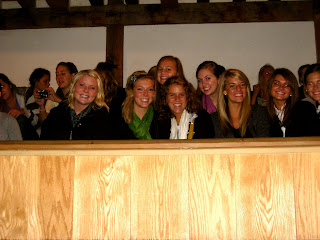One of the places we visited was Fountains Abbey. It is such amazing architecture in the most incredible surroundings. There was a certain spirit about the abbey and the grounds, I felt so peaceful and happy while I was there. Being able to witness such an important and beautiful place was such an amazing experience. The landscape around the building is some of the most beautiful I have ever seen. The colors also make a huge impact on the beauty of the scene. I have never seen such bright green grass and full green trees and we were lucky enough to go on the perfect blue-skied day, which made for some of the most breathtaking scenes.


Another one of my favorite places was the Lake District. I have always loved mountains and lakes and being able to see some landscape closer to that rather than pure countryside was refreshing for me. Being in such a place was so enjoyable and allowed me to just sit and, take it in, and think. The large rolling hills surrounding the water are full or beautiful trees and altogether create a beautiful picturesque landscape that made me feel more at home than I have in quite a while.

Going up north, we were able to drive through and be a part of some of the most gorgeous English countryside. Though the scenery is fairly simple, there are so many small things that can be appreciated in these landscapes. Even the smallest stone wall or body of water makes such a difference and can make the landscape that much more beautiful. I love being able to look at a picture and find something new each time. In the simplicity of the landscape, it feels like a more relaxed and more beautiful time in history, like stepping into a Jane Austen book. England definitely has some of the best landscape and I feel so lucky to have seen the some of the sites it has to offer.




















